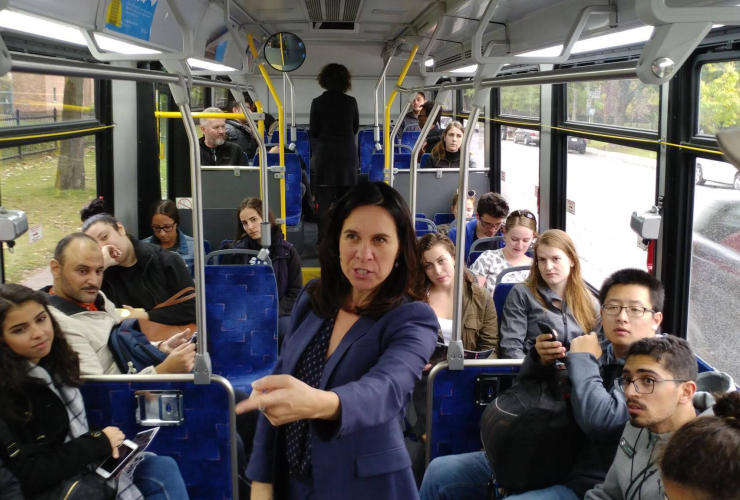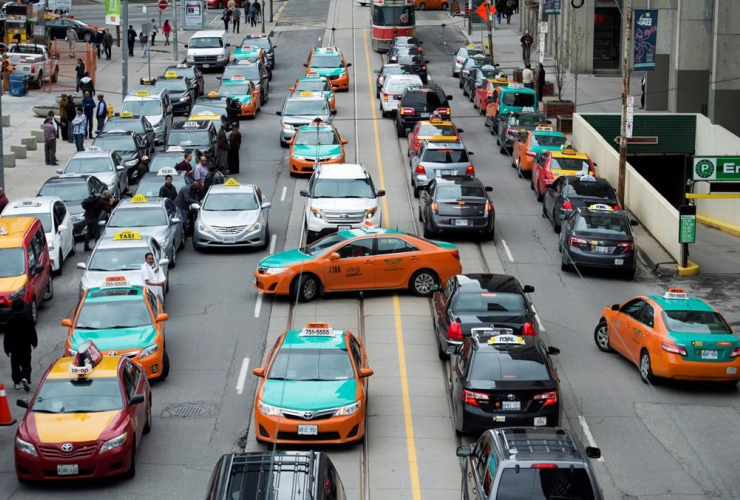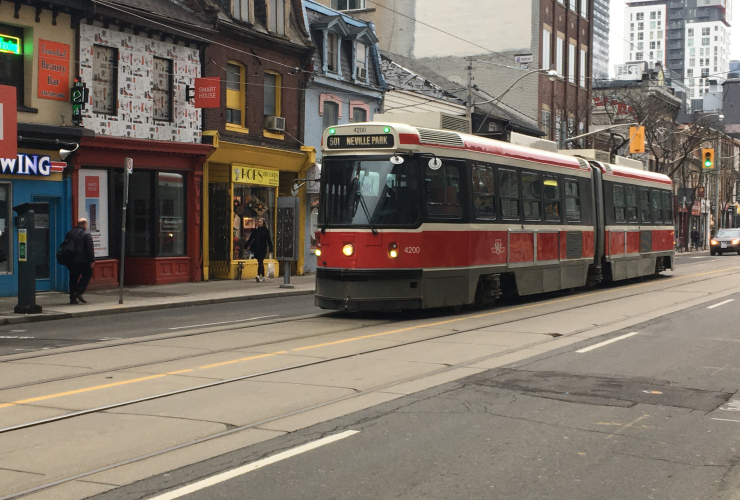The portion of Montreal commuters who drive their cars to work has been stuck at 65 per cent for 15 years – a number that will only change if more investments are made in public transit, says a policy researcher.
The portion of people using public transit has grown so slowly and so little for so long that ambitious local goals to get cars off the road and help reduce greenhouse gas emissions appear difficult to reach.
Between 2001-2016, the portion of commuters using public transportation increased a small amount, from 22.1 per cent to 23.5 per cent, while the portion riding bikes rose from 1.3 per cent to 2.1 per cent, says a study released on Feb. 18 by the Communaute Metropolitaine de Montreal (CMM), representing 82 municipalities in the Greater Montreal Area.
In the same period, the portion of commuters using their cars remained stable at 65 per cent.
“What we’re seeing is a little yellow light that we’re going to need more important investments to change the situation and reduce the modal share of car use,” Philippe Rivet, CMM research advisor in policies, told National Observer.
The CMM adopted an urban strategic plan in 2011, with support from the Quebec government, which aims to decrease greenhouse gas emissions by 2031, partly by decreasing car traffic in the area that is home to four million residents.
The main aim of the CMM's transportation strategy is to increase the proportion of commuters using public transport to 30 per cent by 2021 and 35 per cent by 2031.
“For the past 15 years, the increase (in use of public transportation) has been so weak we’re going to need to increase the pace, the speed of growth of this modal share if we want to reach our targets,” said Rivet.
The CMM ranked the Greater Montreal Area third, behind New York and Toronto, among the 41 biggest urban areas in North America for its use of public transit in the last decade.
“We are very well positioned except that what we’re observing is that in other regions this modal share of public transportation is increasing faster than here, for example in San Francisco and Vancouver, so it’s going to take important investments in public transportation to not be overtaken,” said Rivet.
Greater Vancouver and San Francisco have both seen a 3.9 per cent increase in use of public transport in the last decade, compared to 1.5 per cent in the Greater Montreal Area.
More metro stations increased ridership
Rivet noted that in Laval, a municipality on the North shore of the Montreal Island where three metro stations were created in 2007 to connect the Montreal public transportation network to the city, residents started using public transportation more.
Rivet is encouraged by recent announcements of more investment in public transportation in the Montreal region.
The Caisse de Depot, which controls the project of the REM (Reseau Express Metropolitain), a driverless electric train over 67 kilometres in the region of Montreal with funding from the provincial, federal and local Montreal governments, announced on Feb. 8 that the network is expected to be operational by 2021.
In its strategy for the occupation of land between 2018 and 2022, released on Dec. 11, 2017, the Quebec government also listed the creation of a new metro line in Montreal and the purchase of new hybrid buses as two of its priorities.
However, in its infrastructure strategy between 2017 and 2027, the Quebec government has earmarked less than a third of its investments for public transportation. In its 2017 budget, Ontario had earmarked 70 per cent for public transit and 30 per cent for road transportation.
“In ten years, Ontario will have improved in the entire Greater Toronto Area in indicators of sustainable mobility and we will certainly have improved less because we’re not taking the turn in such an important way,” said Philippe Cousineau Morin, director of of Trajectoire, a Quebec association promoting the development of public transportation services.
Are targets outdated?
Quebec’s transport department had not responded to a request for comment.
Cousineau Morin is more worried about the CMM study.
“If we base ourselves solely on institutional targets that date back to several ago and are probably a bit conservative, given the extent of the climatic issues and mobility issues we’re facing, we are not there at all,” he told National Observer.
He thinks that there are not enough investments in public transportation after many decades and that the current investments are mostly going to maintenance work and repairing old rail network and metro cars.
He also said that there is still a lack of global strategy for mobility with different offices working in silo.
In Montreal, the Regional Authority of Metropolitan Transportation (ARTM), based on Vancouver’s Translink, has been overseeing mobility projects in the Greater Montreal Area since June 2017.
Cousineau Morin said that despite a new promising governance, the planning was still not integrating all data from different strategies about road and public transportation.
“We are working in silos,” he said.
Amélie Régis, spokesperson for Montreal’s metro and bus network, STM, said in an email that it is planning to increase service through the expansion of the existing blue line,the introduction of new metro car allowing eight per cent more users in them and the increased frequency of metros.
She said that the STM is also improving the network’s reliability with more investments between 2018 and 2027.
Marilyne Laroche Corbeil, spokesperson for the City of Montreal, said public transportation was at the heart of Valérie’s Plante’s administration’s priorities. She said that the city had already purchased 300 new hybrid buses for Montreal’s bus network, STM, and was working on the expansion and creation of metro lines.
In an inaugural speech as the new president of the Communauté Métropolitaine de Montréal on Feb. 22, the Montreal mayor said that sustainable mobility was one of her priorities for the development of the greater region of Montreal.
"I will ensure that the files we have in our care and the decisions we take contribute to improve life quality of all," Plante said. "We have a common objective: to make the metropolitan region a real reference in terms of mobility, housing, economic and environmental development."
When public transport if free
When public transport if free, it will be greatly used, and the resultant drop in healthcare cost will pay for the free public transportation. What a delight it would be to breath oxygen in a city instead of automobile poison.
The number of sick days would decrease hugely as well as many other benefits we can't even think of yet.
Employees would be more productive at work! A win:Win for everyone!






Comments